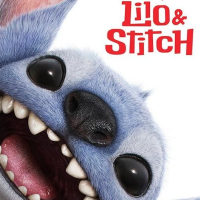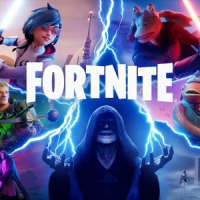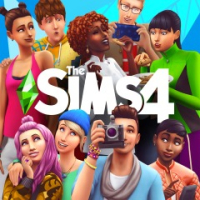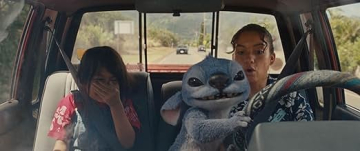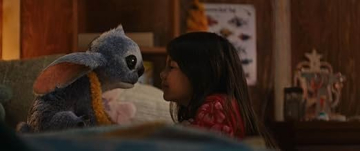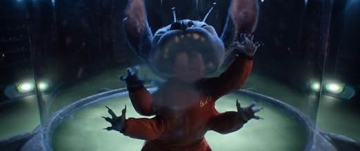A Cross-Generational ‘Ohana Returns
When Disney first announced that Chris Sanders’ irrepressible blue experiment and his Hawaiian family would receive a big-screen revival in 2025, sentiment ranged from giddy anticipation to guarded skepticism. Could any filmmaker recapture the scrappy spirit of the 2002 animated original while also justifying the need for a new chapter in a media landscape saturated with remakes? Having attended an early critics’ screening, I can report that Lilo & Stitch 2025 is neither a slavish shot-for-shot recreation nor a cynical cash-in. Instead, it is an affectionate, live-action/CGI hybrid that tweaks the narrative DNA just enough to surprise returning fans while remaining accessible to newcomers who arrive via stream, cable, or the theatrical experience.
The film is directed by Destin Daniel Cretton, who brings the same family-forward empathy that guided his indie breakthrough Short Term 12. Working from a screenplay co-penned with Dana Ledoux Miller, Cretton focuses on character intimacy first, spectacle second, and in doing so he reclaims the heart so often lost in modern franchise-building. Yes, Stitch still gleefully demolishes everything in sight, but here his manic energy is balanced by quieter beats that allow Nani and Lilo to voice frustrations rarely explored in a PG family film. The result feels less like a typical Disney extension and more like a stand-alone portrait of grief, cultural identity, and sisterhood—sprinkled, of course, with intergalactic havoc.
Plot: Familiar Framework, Fresher Stakes
The scaffolding will be recognizable to anyone who grew up rewinding the DVD until the disc screamed for mercy. Stitch, officially Experiment 626, crash-lands on Kaua‘i after a farcical prison break orchestrated by his mad-scientist creator Jumba (now played with silky menace by Ken Watanabe). He is adopted—more or less accidentally—by the lonely, Elvis-obsessed Lilo (breakout discovery Kea Lani Kealoha), who lives with her overworked older sister Nani (Auli‘i Cravalho). The new film retains that inciting incident but pivots away from the original’s social-services subplot; rather than Cobra Bubbles, we meet Child Welfare Officer Nalani Hale (Nicole Beharie), whose presence underscores systemic pressures on Native Hawaiian families trying to remain economically afloat. Lilo, still reeling from the sudden loss of her parents, must learn that ‘ohana means family and family means nobody gets left behind—or meteor-bombed in the middle of Hā‘ena State Park.
The climax moves from the initial film’s spaceship-centered dogfight to an emotionally resonant canoe regatta during the Mālama Honua stewardship festival. By anchoring that finale in real Hawaiian tradition, the screenplay connects the extraterrestrial hijinks to broader themes of environmental care and cultural preservation. It’s a clever swap that lends the action a grounding authenticity often missing from VFX-heavy blockbusters.
Performance & Characterization
Kea Lani Kealoha, all of nine years old, is a revelation. Her Lilo is simultaneously mischievous, wounded, and defiantly confident. She navigates scenes of comic chaos and crippling guilt without slipping into saccharine extremes—a balance even adult actors struggle to sustain. Auli‘i Cravalho, meanwhile, graduates from Disney princess to beleaguered guardian with grace; her embodied exhaustion is heartbreaking yet never pity-seeking. Their chemistry convinces us that these sisters argue because they care so fiercely.
Chris Sanders reprises the gibberish growls of Stitch, assisted by an upgraded motion-capture rig that gives the alien fur texture so tactile you practically want to reach through the screen to pet him—if you’re brave enough. Zach Galifianakis lends Pleakley a twitchy warmth, while Watanabe’s Jumba mixes paternal pride with comedic bombast. Remarkably, none of these returning personalities overshadows the human cast; big studio remakes can devolve into CGI vanity parades, but here the effects serve the performers, not the other way around.
Visual & Sonic Craft
Shot on location across Kaua‘i and O‘ahu, the movie’s cinematography (Autumn Durald Arkapaw) basks in bruised-peach sunsets and diamond-shard surf, capturing a Hawaii that is both tourism brochure–gorgeous and economically complicated. The production design spices live-action tableaux with candy-colored alien tech that feels tactile rather than rubbery. One sequence, in which Stitch accidentally rewires a shaved-ice machine into a snowstorm generator, blends practical snow cannons with digital particles to whimsical effect.
Composer Ludwig Göransson introduces Polynesian percussion under beds of steel guitar, punctuated by the occasional Elvis deep cut. The result is a soundtrack that never feels like karaoke of the original’s hits yet still honors its rockabilly DNA. Dolby Atmos mixing earns its keep when Stitch scampers across a tiled kitchen; each clawed footfall scurries around the ceiling speakers, cementing his physical presence.
Direction & Structural Pacing
Cretton juggles multiple tonal plates—sci-fi comedy, family melodrama, social commentary—and keeps them rotating without ever spilling shards of narrative across the floor. The first act’s world-building briskly introduces alien bureaucracy in under ten minutes, yet the story never feels rushed. The mid-movie lull that hampered the original is alleviated here by a stealth father-figure subplot involving David Kawena (Charles Melton), whose attempts to earn Nani’s trust provide both romantic levity and cultural exposition about local surfing competitions. Clocking in at 1 hour 48 minutes, the film rarely drags.
Accessibility, Age Suitability & Thematic Richness
Lilo & Stitch 2025 retains a PG age rating due to slapstick violence, mild peril, and one comedic gag involving Stitch impersonating a paramedic with a defibrillator. Parents can stream this one without fret, though very young viewers might find Jumba’s laboratory prologue a little intense. The movie also scores points for its transparent engagement with Hawaiian language—snippets of ‘Ōlelo Hawai‘i are subtitled, but not in a didactic way. This choice respects bilingual families while enlightening audiences who may watch the film online in territories where indigenous culture is seldom spotlighted, especially on mainstream platforms.
The script folds in conversations about gentrification and rising sea levels, yet it never lectures. Instead, the environmental message blossoms from the sisters’ personal stakes: if their concession-stand income dries up, they may be forced to leave the island and their parents’ graves. That socio-economic tension renders the well-known catchphrase “nobody gets left behind” freshly urgent rather than nostalgic tokenism.
Inclusivity also extends to casting: the film features an ensemble of Kanaka Maoli actors in key supporting roles, and the hula sequences were choreographed alongside Kumu Hula Kaui Kanaka‘ole, enriching authenticity. For families seeking unblocked representation on mainstream screens, that alone is worth the ticket or the 4K download.
Pros
- Authentic location shooting lends the film visual gravitas absent from green-screen heavy remakes.
- Kea Lani Kealoha’s magnetic performance makes Lilo relatable to both children and adults.
- Balanced blend of practical effects and CGI keeps Stitch tactile and credible.
- Refreshed narrative stakes integrate Hawaiian cultural festivals and environmental themes.
- Composer Ludwig Göransson’s score weaves Polynesian rhythms with legacy Elvis tracks for an invigorating soundscape.
- Tight pacing avoids the sag typical of mid-section family films, maintaining engagement whether you watch in theaters or stream at home.
- Culturally respectful language integration and local casting showcase genuine Hawaiian representation.
- Family-friendly comedy coexists with poignant explorations of grief, expanding emotional depth.
Cons
- Ken Watanabe’s Jumba steals scenes but sometimes shifts tonally into cartoon villainy that clashes with the live-action realism.
- Certain comic set pieces—in particular a high-speed chase through a farmers’ market—feel designed more for theme-park rides than narrative necessity.
- Subplots hinting at tourism-driven displacement are introduced yet resolved too neatly, muting potential socio-political bite.
- Fans craving the original’s zany outer-space sequences may find the earthbound climax comparatively low-stakes.
Verdict
Lilo & Stitch 2025 succeeds by daring to be gentle at a time when franchise films often equate louder with better. It reminds viewers that sincerity can still thrive amidst spectacle, that grief and laughter can coexist in the same surf-splashed frame, and that family—whether assembled through biology or laboratory mishap—remains the most compelling narrative engine. For longtime fans wondering if a remake can justify itself, the answer is a qualified yes: it does so by evolving rather than replicating. For newcomers who may encounter the story for the first time via a free classroom screening or a quick late-night online rental, this iteration should feel as immediate and inviting as its predecessor did two decades prior.
How to watch Lilo & Stitch 2025 online
The film is rolling out in phases. At the time of writing, it is available for digital purchase through major retailers and is expected to arrive on subscription-based services within the standard 45-day window.
Age Rating: PG – some material may not be suitable for children.
Netflix: Not yet streaming, but the studio’s recent output deal suggests it could land here by late summer. If it does, new subscribers can use the platform’s 30-day trial to watch in 4K and download episodes for offline family trips.
Amazon Prime Video: You can rent or buy the film in HD and UHD. Rental grants 48 hours of access once you press play, and purchase unlocks unlimited re-watch and download on compatible devices.
Apple TV: Available to purchase or rent with Dolby Vision and Atmos support. The app’s Family Sharing lets up to six members access the download without extra cost.
Peacock: The movie will probably debut on Peacock Premium after its transactional window. The ad-supported tier may eventually host a free version, though downloads require a Premium Plus subscription.
Hulu: No confirmed date yet, but given Disney’s ownership stake, expect it within the year. Offline viewing is limited to mobile devices on the ad-free plan.
YouTube (Movies): Already live for rent and purchase. The YouTube app allows download on mobile for 30 days as long as you stay signed in.

